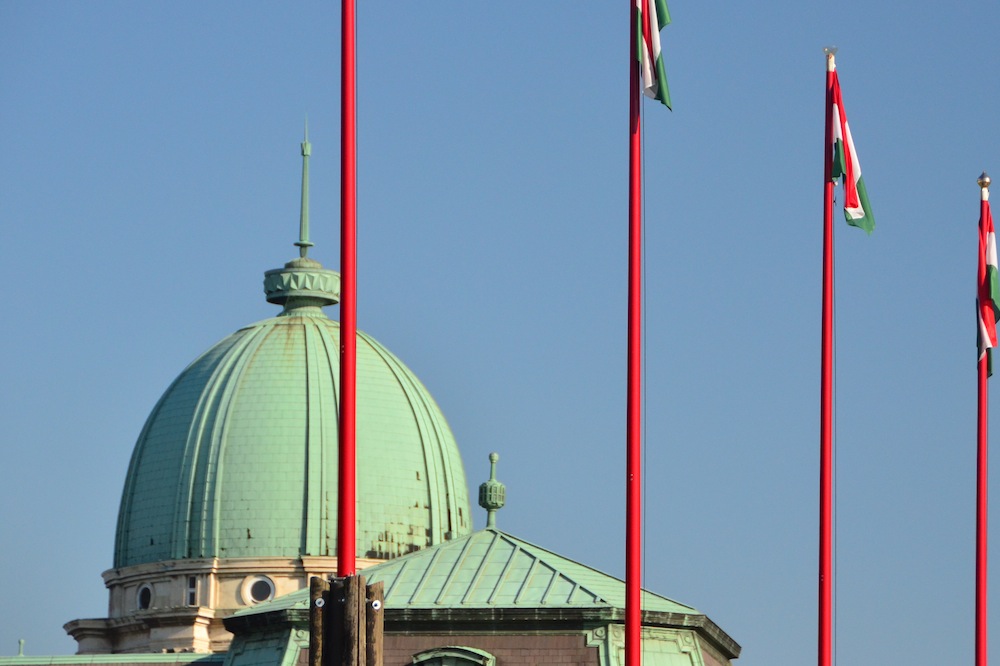
Budapest has a reputation as one of Europe’s most incredible cities, and this is precisely the reason I’ve never actively pursued a visit there: I knew I wouldn’t have anything unique to say about the once-obscure Hungarian capital, which at least 50 per cent of young Caucasian travelers I’ve met in the last year now list as their “favorite place in the world.”
“Actively” is the operative term here: My stay in Budapest last month was motivated not by actual desire, but rather by the fact that I, like the majority of people traveling by train from Western Europe to Eastern Europe, had no choice but to stop there.
It would have been sensible to simply relax at Budapest’s Keleti station during the three hours I had to blow there, especially given my having admitted defeat RE: contributing anything to the prevailing discourse about the city.
Of course, I’ve never been one for sensibility, so I decided to use my Budapest stopover as an opportunity to see as much of the city as I possibly could. Who needs physical and/or mental well-being, anyway? I thought, as I packed the larger of the two small bags into a locker in the station’s extremely seedy basement.
Whether you too are considering exploring Budapest on your brief stop there, or you’re just curious as to what I was able to accomplish with three hours in Hungary’s capital, I hope you continue reading – I imagine you’ll be as surprised as I was!

CURRENCY EXCHANGE. Foolishly, I assumed that everywhere in Budapest, like many E.U. countries that aspire to one day become part of the Eurozone, would accept euros, and I was surprised that this wasn’t the case. I was not surprised to find out that the “official” exchange rate being offered at Keleti station was significantly worse than the one my iPhone told me I should expect.
I also wasn’t particularly shocked that, before I could even close out of my “Currency” app, an extremely shady-looking man, smoking an extremely smelly cigar, was begging me use his services. I saw the huge sign warning me against doing so – and hordes of adjacent police – but what can I say? I wanted to feel as seedy as my surroundings. Goodbye, inhibitions; hello ill-gotten Forint!

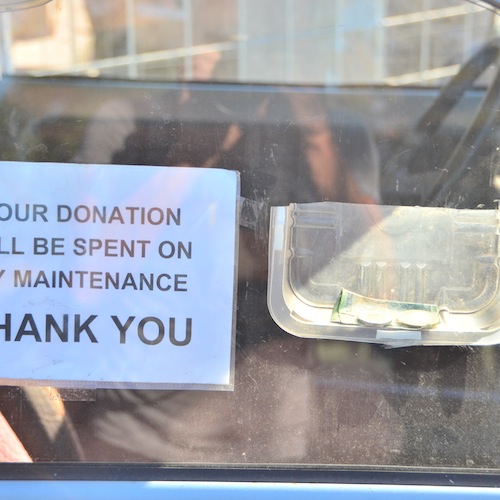

WALK OF SHAMELESSNESS. I’d gotten in on the proverbial action within just a minutes of my arrival, so although I didn’t particularly trust the tourism official who told me it was only a 15-minute walk from the station – she tried to bribe me into paying for a free map, do you blame me? – I felt only minimal urgency to arrive at the city center, and decided to go on foot.
I would be lying if I said I wasn’t charmed by the neo-classical buildings that lined Rákóczi Way, the boulevard that leads from the station to the city center, their extreme dilapidation notwithstanding. However the highlight of my promenade, which indeed took longer than 15 minutes, walking extremely fast, was the Hooters ad I saw on what seemed to be an ordinary city bus.
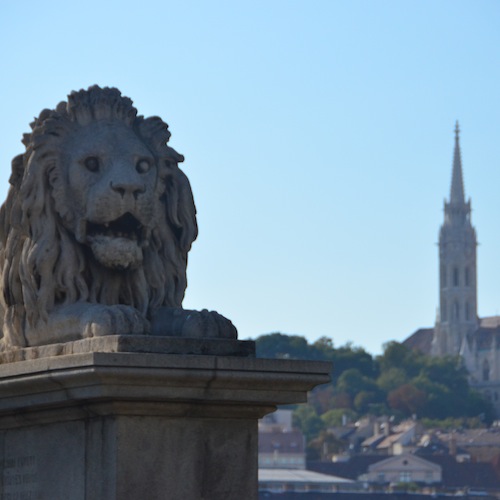

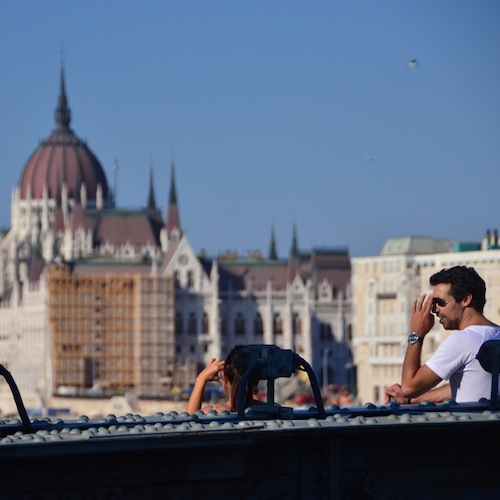
THE NOT-SO-BLUE DANUBE. I hadn’t studied the geography of Budapest much before arriving, so I was both surprised and disappointed upon arriving at the Danube (which is definitely not blue) and learning that I would need to cross the murky moat in order to get to the part of Budapest that’s been charming drunk gap year travelers for as long as I’ve known what a gap year is.
Surprised and disappointed, but hopelessly charmed, from the moment I stepped on to the Széchenyi Chain Bridge, an impossibly gaudy structure adorned with stone lions, among other insignia. Hopelessly charmed, because the sun was no more than an hour away from setting, and the only thing that could’ve made Budapest look better than it did was the light of the golden hour.
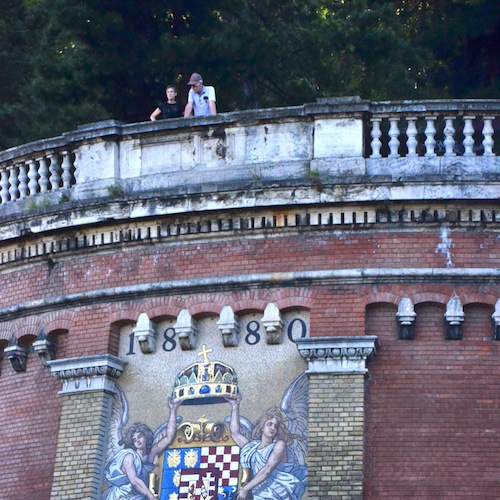

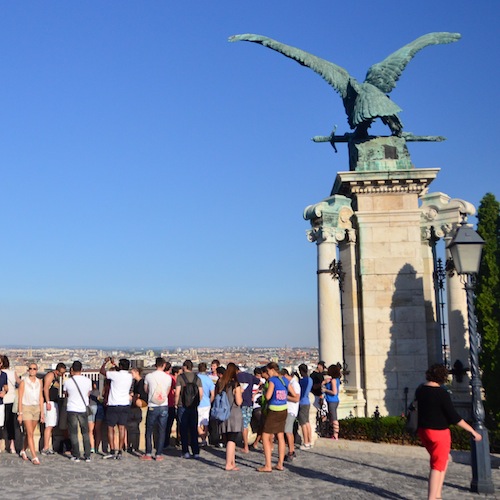
KING OF THE (GELLÉRT) HILL. So hopefully charmed was I the moment I finally crossed the Danube into Budapest proper, chavvy gap-year brats be damned, that the massive hill my intuition told me I would need to climb as the next step of my exploration seemed to grow smaller, not bigger, the closer to it I got. (In hindsight, I realized this was probably extreme fatigue and dehydration.)
In any case, scale Gellért Hill I did, and in addition to the epic panorama I enjoyed – and the sexy government guards on whom I got to perv freely, on account of the fact that they can’t move, speak or have facial expressions unless you are actually threatening national security – I felt an impossible sense of satisfaction.
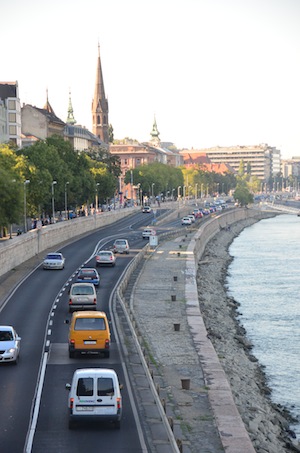
AS THE ROMANS DO. My Budapest itch scratched, I descended from the hill, traipsed back over the chain bridge (not, naturally, without taking a few sulky selfies) and began following my proverbial breadcrumbs back to Keleti station. About halfway there, when passing a Burger King, I noticed an alarming number of young men using their smartphones on the street.
I’m all for stealing WiFi from people who are too dumb to password protect it (or, in this case, from businesses that choose not to require proof of purchase to access their “free” networks) so, if anything, I was even more shameless in my thievery than the punks around me: I called my Dad via Skype from the Burger King in Budapest, or at least I did for the 48 seconds the weak signal allowed.
As my Romania-bound train pulled out of the station just minutes after I boarded it, I smiled widely, and not just because a stocky railroad official escorted me into a private sleeping compartment instead of the communal one I booked: I’d gained more, esoterically speaking, from three in Budapest, than I ever could’ve hoped for on a proper visit there.

Robert Schrader is a travel writer and photographer who’s been roaming the world independently since 2005, writing for publications such as “CNNGo” and “Shanghaiist” along the way. His blog, Leave Your Daily Hell, provides a mix of travel advice, destination guides and personal essays covering the more esoteric aspects of life as a traveler.








